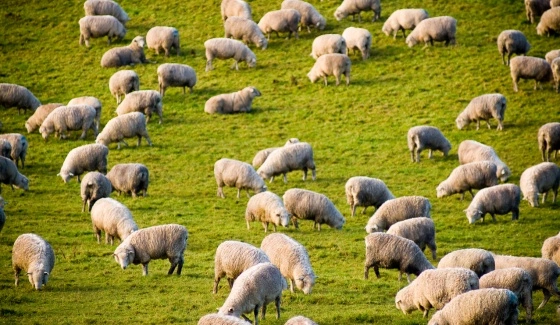
What is whole-body energy and why is it important?
Whole-body energy is a term that we use to describe the total stores of energy that an animal has to draw from in tough times or lactation. It is largely driven by the total amount of fat the animal has stored in its body. This is because mobilising stored fat releases around seven times more energy than mobilising lean tissue. Energy from stored fat is also one and a half times more useful to the animal than fed energy because of the efficiency of its conversion.
We have been interested in this concept for a long time and around a decade ago we wrote a proposal to conduct some detailed experimentation on the area. Finally, after many years of trying, the team at Murdoch University, Dr Andrew Thompson, Sarah Thompson and Colin Byrne were able to secure funding from AWI. This experiment is currently underway and promises to be the most important research in a generation.
The preliminary modelling that has been conducted on the area shows that the results could have an enormous impact on the indexes for merinos and (in time) maternal ewes. This modelling shows that genotypes that naturally store more whole body energy can be run at higher stocking rates, with lower supplementary feeding and are ultimately more profitable. This work was completed by John Young.

When John completed this modelling, he searched the literature to get a feel for the likely differences in whole body energy that might exist between merino genotypes. He based his modelling on some work completed by one of my PhD supervisors, the late Dr Norm Adams and Jan Briegel. Norm and Jan had completed detailed studies on high and low fleece weight genotypes. Their work showed a 17% difference in whole body energy, with the low fleece weight genotype storing 17% more energy than the high fleece weight genotype.
This is why the graph goes out to 17%, because this is a known biological difference between two genotypes. What the modelling shows, as can be seen on the graph, is that genotypes with high natural levels of whole body energy can be run at higher stocking rates, with reduced supplementary feeding, resulting in higher pasture utilisation and massively different profitability.
The experiment that is now underway is being conducted by the team at Murdoch University: Andrew Thompson, Sarah Blumer and Colin Byrne. The work is being conducted on wether progeny from the Merino Lifetime Productivity Pingelly site. Considering the diversity of genotypes in these wethers, they are perfect for the job. Preliminary results presented recently by Sarah show that the difference between genotypes in whole-body energy is actually higher than that modelled by John Young and is actually around 20% between the lowest and highest sires for whole-body energy. There is a bit of water to go under the bridge, but I am very confident this work is going to have a major impact on the selection indexes that are used across the industry.
For those breeders that have been breeding for positive fat - and therefore positive whole-body energy - this is very good news. For the remainder of the industry that has not genetically shifted whole-body energy in the last two decades, these results need to be carefully considered.
We will share the experimental results with you as soon as they are approved for release. These are exciting times in the world of sheep breeding.
___
You might also be interested in ...
Balancing the merino breeding objective with John Young (webinar recording)
CV or not CV: the real value of the coefficient of variation in fibre diameter by Dr Mark Ferguson (article)




.jpg)




